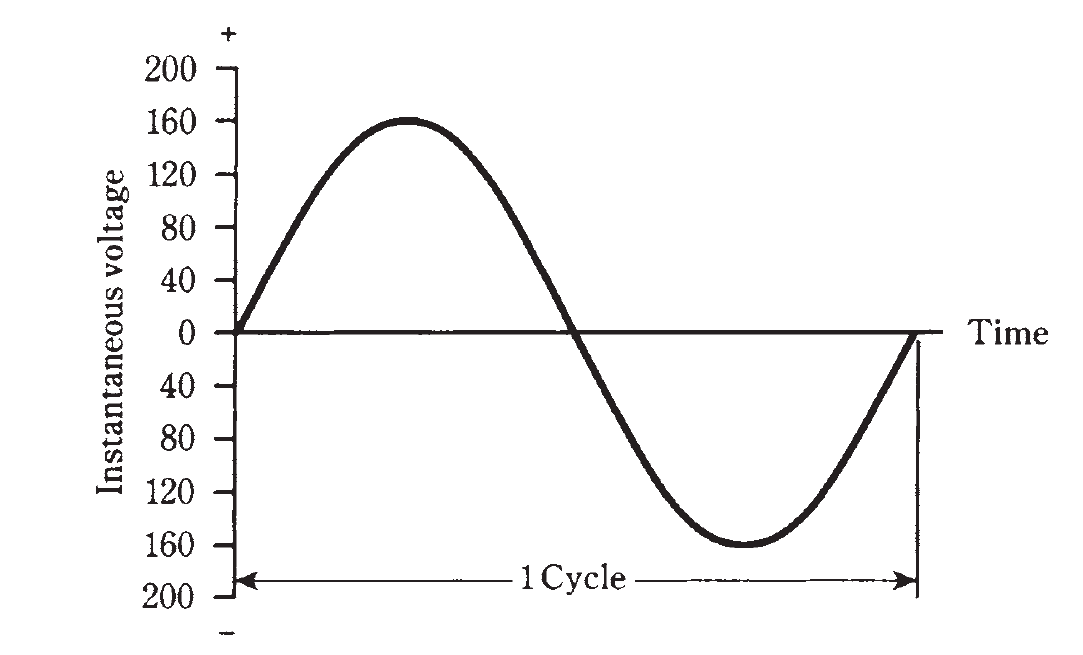
ac Waves and the hertz
 المؤلف:
Stan Gibilisco
المؤلف:
Stan Gibilisco
 المصدر:
Teach Yourself Electricity and Electronics
المصدر:
Teach Yourself Electricity and Electronics
 الجزء والصفحة:
34
الجزء والصفحة:
34
 5-4-2021
5-4-2021
 3384
3384
ac Waves and the hertz
Is concerned with direct current (dc), that is, current that always flows in the same direction, and that does not change in intensity (at least not too rapidly) with time. But household utility current is not of this kind. It reverses direction periodically, exactly once every 1/120 second. It goes through a complete cycle every 1/60 second. Every repetition is identical to every other. This is alternating current (ac). In some countries, the direction reverses every 1/100 second, and the cycle is completed every 1/50 second.
Figure 1 shows the characteristic wave of alternating current, as a graph of voltage versus time. Notice that the maximum positive and negative voltages are not 117 V, as you’ve heard about household electricity, but close to 165 V. There is a reason for this difference. The effective voltage for an ac wave is never the same as the instantaneous maximum, or peak, voltage. In fact, for the common waveshape shown in Fig. 1, the effective value is 0.707 times the peak value. Conversely, the peak value is 1.414 times the effective value.

Figure 1: One cycle of utility alternating current. The peak voltage is about 165 V.
Because the whole cycle repeats itself every 1/60 second, the frequency of the utility ac wave is said to be 60 Hertz, abbreviated 60 Hz. The word “Hertz” literally translates to “ cycles per second.” In the U.S., this is the standard frequency for ac. In some places it is 50 Hz. (Some remote places even use dc, but they are definitely the exception, not the rule.)
In radio practice, higher frequencies are common, and you’ll hear about kilohertz (kHz), megahertz (MHz) and gigahertz (GHz). You should know right away the size of these units, but in case you’re still not sure about the way the prefixes work, the relationships are as follows:

Usually, but not always, the waveshapes are of the type shown in Fig. 1. This waveform is known as a sine wave or a sinusoidal waveform.
 الاكثر قراءة في الألكترونيات
الاكثر قراءة في الألكترونيات
 اخر الاخبار
اخر الاخبار
اخبار العتبة العباسية المقدسة


